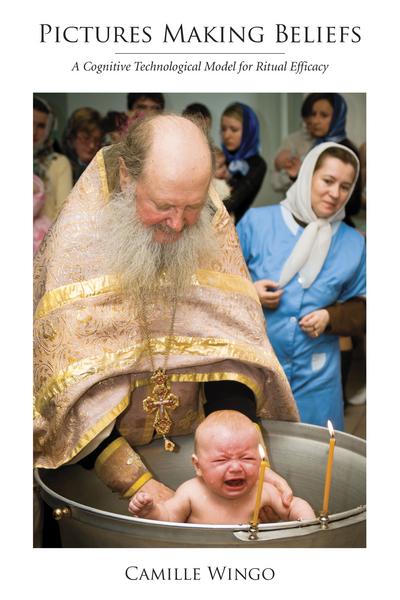Pictures Making Beliefs
A Cognitive Technological Model for Ritual Efficacy
2012
Tags: Anthropology and Ritual Studies Monograph Series
252 pp $30.00
ISBN 978-1-59460-973-2
eISBN 978-1-5310-1078-2
One question which yet bedevils the study of ritual is this: "How are rituals ever efficacious?" Or, put another way, "How is anyone ever persuaded that a ritual does or makes what it claims to do or make?" This book addresses the question by proposing a cognitive model for ritual as information processors (participants) instantiating information processes (rituals). Ritual participants use cognitive technologies to create cultural objects. A cognitive technology is a change we make in the environment to bolster our native cognitive skills; shopping lists are cognitive technologies to bolster memory. A cultural object is a thing in the world that is what it is by virtue of the combination of what it is physically and a culture's agreement on what it is; biscuits in the U.K. and cookies in the U.S. are cultural objects. Rituals, the book proposes, are effective inasmuch as they make or manipulate cultural objects.
Pictures Making Beliefs expands its proposal by comparing rituals to kindred cultural technologies: pictures and make-believe. The premise is that the study of ritual as cognition can be expanded, enlightened and improved by the use of concepts and methods prevalent in investigations of the cognitive underpinnings of these kindred cultural achievements. From these comparisons emerges the idea of worlds as a quasi-technical explanation of pictures, make-believe, the here and now and rituals as information streams flowing through body, brain and environment.
Finally, the book situates the cognitive technological model within the wider landscape of religious studies by placing it within a chain of correlations from lower level descriptions (e.g. in neuro-science) to the higher levels (e.g. in sociology) by presenting the objects created and manipulated in ritual as essentially contested. The claim is that, in the performance of rituals, participants structure the world in ways to create boundless and obscure objects whose proper function in the world outside their ritual relies upon their being, in their essence, contestable.
This book is part of the Ritual Studies Monograph Series, edited by Pamela J. Stewart and Andrew Strathern, Department of Anthropology, University of Pittsburgh.
"The author writes in a skillful and fluid style, and the book is remarkably accessible given its level of technical and scholarly information. This is not a book about debunking religious faith; it attempts to explain how rituals work, not why they do. Its goal is to describe how people's minds operate on levels from neurobiology to group social behavior. The book is interesting, unusual, strongly researched, and well written." — Book News, Inc. (December 2012)


